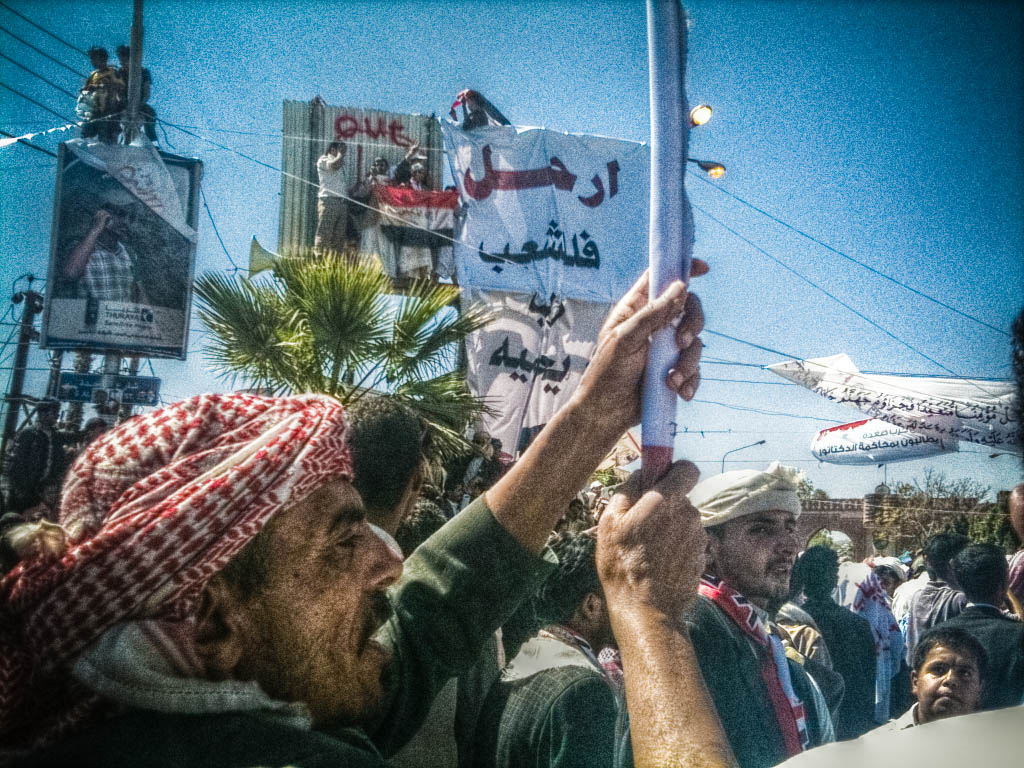Recent shifts in American security policy, including the killing of Osama bin Laden and dismantling of Al-Qaeda along the Afghanistan-Pakistan border, indicate that Al-Qaeda operations are no longer centered in the Af-Pak region but rather in the often overlooked nation of Yemen. A poor country in the Gulf of Aden, Yemen has been a stronghold for Al-Qaeda operations due in part to coalition successes in the Af-Pak region. The country has an uncertain political future as the 33-year reign of President Ali Abdullah Saleh is seemingly coming to a close due to the country’s recent protests, as part of the larger Arab Spring revolutions. [i] Furthermore, the economy is in shambles and consistently ranks among the worst in the Middle East, while the nation suffers from frightening food and water insecurity.[ii] Combined with widespread corruption, these factors create the perfect environment for terrorist operations, recruitment, and training.[iii] The key, in essence, will be to see which approach the United States and its allies take to combat Yemeni terrorism and eradicate the world’s biggest terrorist threat in the interest of global security.
According to data from the National Consortium for the Study of Terrorism and Responses to Terrorism, attacks by Al-Qaeda in Yemen, known as Al-Qaeda in the Arabian Peninsula (AQAP), were relatively rare until 2008 when they spiked to unprecedented levels.[iv] The organization first gained a foothold in the country following the return of the Mujahideen to Yemen after fighting the jihad in Afghanistan to overthrow the Soviet-led government.[v] As the group evolved and training camps across the country were formed, AQAP developed a reputation after executing two of the most well-known terrorist attacks of the last decade: the 2000 bombing of the USS Cole and the failed 2009 underwear bombing aboard Northwest Airlines Flight 253, inspired by American-Yemeni cleric Anwar al-Alwaki.[vi] The group is now pursuing a more global strategy by deriving its funding from foreign financiers and using the sermons of al-Alwaki–named a Specially Designated Global Terrorist by the United States–as a propaganda tool.[vii] The terrorist threat in Yemen is imminent and AQAP operations within the country have reached alarming levels.

The United States’ counter-terrorism policy towards Yemen consists mainly of strategic air and unmanned drone strikes aimed at Al-Qaeda and other militants in the country.[viii] These allows the United States to devastate the militants without directly involving ground troops in another costly and ineffective war. Though the strikes are usually precise, the potential for civilian casualties has some analysts weary that the Yemeni people may choose to side with the jihadists and even join AQAP.[ix] Ken Gude, managing director of the National Security and International Policy Program at the Center for American Progress, is one such individual who believes that the United States’ tactics in Yemen, though well intended, could have disastrous effects and could work against the United States in the long term.[x] Gude believes that a strategy aimed at resolving Yemen’s political crisis and restoring order would be more effective in dismantling AQAP.[xi] However, Gude is aware of the shortcomings of a purely political solution and understands the necessity of integrating an economic solution into any strategy towards Yemen.[xii]
The United States’ approach towards Yemen must address the necessary political, economic, social, and security factors. It should be noted that the United States is largely tasked with providing aid to Yemen despite the fact that the domestic economy is struggling and as such politicians may be hesitant to send more money abroad.[xiii] That being said, a viable solution is of utmost importance, and a successful strategy can still be achieved despite limitations of the American economy. The political situation in Sana’a, the capital, can be resolved in the short term if Yemen’s economy is stabilized, and a long term development plan is implemented. Doing so is crucial considering that 45.2 percent of Yemen’s population lives under the poverty line and 50.2 percent of the population is illiterate.[xiv]
Two distinct factors contribute to the lack of economic growth and development in Yemen: first, the country primarily relies on oil exports for revenues, roughly 1/4 of its GDP, despite a dwindling supply. And the majority of the population does not benefit from these revenues, as the government mishandles the funds.[xv] Furthermore, Yemen has a horrendous outlook in terms of food and water security as it has the poorest hydrologic infrastructure in the Arab world and is predicted to be the first country in the world to run out of water, while the government’s poor distribution of funds has essentially starved the country.[xvi] The absence of the rule of law in the country has allowed the situation to regress even further, as looting, drug trafficking, and armed robbery accompany terrorism as means of capitalizing on the lack of effective government control.[xvii]
Although the United States is capable of tackling the jihadist threat within Yemen, the complexity of the political and economic problems facing Yemen requires that a solution needs to come from within the country, supported by the international community. Matters of national sovereignty, as well as the unpopularity of an American presence in the Gulf prevent the United States from enforcing elections in Yemen similarly to those in Afghanistan and Iraq. However, the United States can do its part by encouraging President Saleh to either step down or establish a better grip on his country’s political situation by more effectively joining in on the fight against AQAP and militants in the country.[xviii] The former is certainly preferred as it would establish a democracy, however it could backfire by creating even more anarchy or even result in a hostile Islamist state.[xix] The United States can only anticipate the outcome of the turmoil over the next few months and should respond accordingly.
Once the political situation is resolved, Yemen’s economy must be addressed. The World Bank along with other international organizations should be used as the primary organ for development to establish better infrastructure, hospitals, and education for the Yemeni people.[xx] The hope is that better education, along with improved water and food infrastructure can create better living standards and deter the poorer segments of the population from resorting to violence and joining any jihadist movements.[xxi] This development would create more jobs and keep the population relatively content, giving citizens little incentive to loot and take part in the lawlessness.
It is believed that no political or economic stabilization can occur in Yemen if the United States does not continue its fight against the militants, a point that Gude concedes in his article.[xxii] The United States should continue its strikes against the jihadists while the Yemeni military provides support on the ground as well as in the air. This hands-off strategy of the United States can allow it to remain active in Yemen in the long term without having to commit any ground troops, and thus could prove to be a successful strategy in the Middle East.
The aforementioned strategy of political and economic reforms outlined is perhaps wishful thinking for a horrifically bleak situation. After all, Yemen may have already sunk too far into the abyss of chaos to be revived, as many analysts fear. However, the policies taken over the next eighteen months by President Obama and any successive administrations could ultimately determine whether terrorism in Yemen is defeated and whether a viable Yemeni state is finally established.
[i] “Yemen: Into the Unknown.” The Economist 09 Jun 2011: n. pag. Web. 8 Jul 2011.
[ii] “Yemen’s Turbulence: Time Running Out?.” The Economist 03 Mar 2011: n. pag. Web. 8 Jul 2011.
[iii] “Yemen and Al-Qaeda: The Jihadist Threat.” Economist 16 Jun 2011: n. pag. Web. 8 Jul 2011.
[iv] United States. Global Terrorism Database. College Park, MD: 2010. Web. 21 Jul 2011.
[v] “Yemen and Al-Qaeda: The Jihadist Threat.”
[vi] Ibid.
[vii] United States. Al-Qa’ida in the Arabian Peninsula. , Web. 26 Jul 2011.
[viii] Dilanian, Ken. “CIA Plans Drone Strike Campaign in Yemen.” latimes.com. Los Angeles Times, 14 Jun 2011. Web. 7 Jul 2011.
[ix] Gude, Ken. “Misfiring at Al Qaeda in Yemen.” americanprogress.org. Center for American Progress, 14 Jun 2011. Web. 8 Jul 2011.
[x] Ibid.
[xi] Ibid.
[xii] Gude, Ken, and Ken Sofer. “The Best Last Chance to Save Yemen.” americanprogress.org. Center for American Progress, 10 Jun 2011. Web. 8 Jul 2011.
[xiii] “Angst in the United States: What’s Wrong with America’s Economy?.” Economist 28 Apr 2011: n. pag. Web. 8 Jul 2011.
[xiv] United States. World Factbook. , 2011. Web. 8 Jul 2011.
[xv] Ibid.
[xvi] Ibid.
[xvii] “Yemen and Al-Qaeda: The Jihadist Threat.” The Economist.
[xviii] Gude, Ken, and Ken Sofer. “The Best Last Chance to Save Yemen.”
[xix] Ibid.
[xx] Ibid.
[xxi] Ibid.
[xxii] Ibid.



